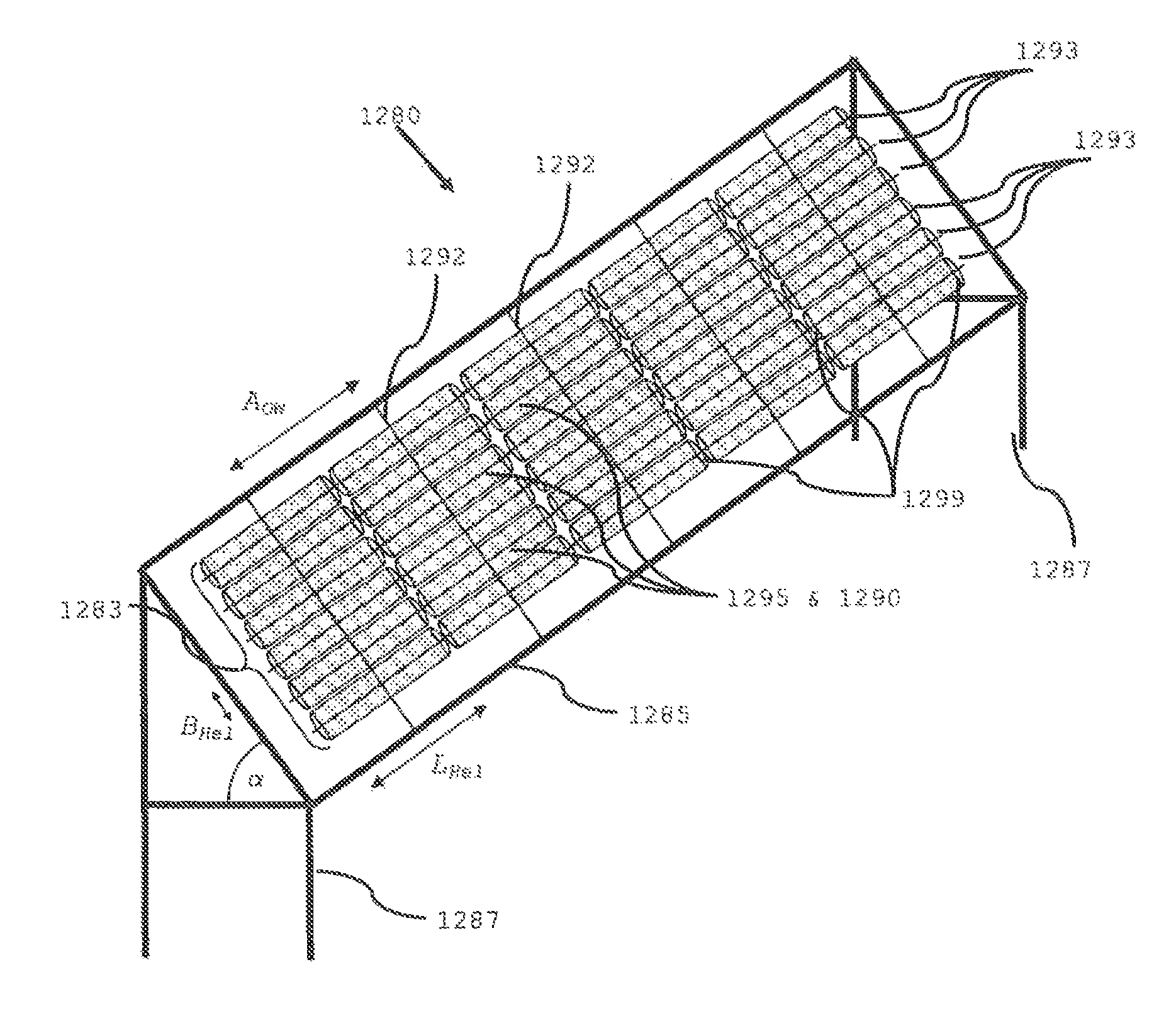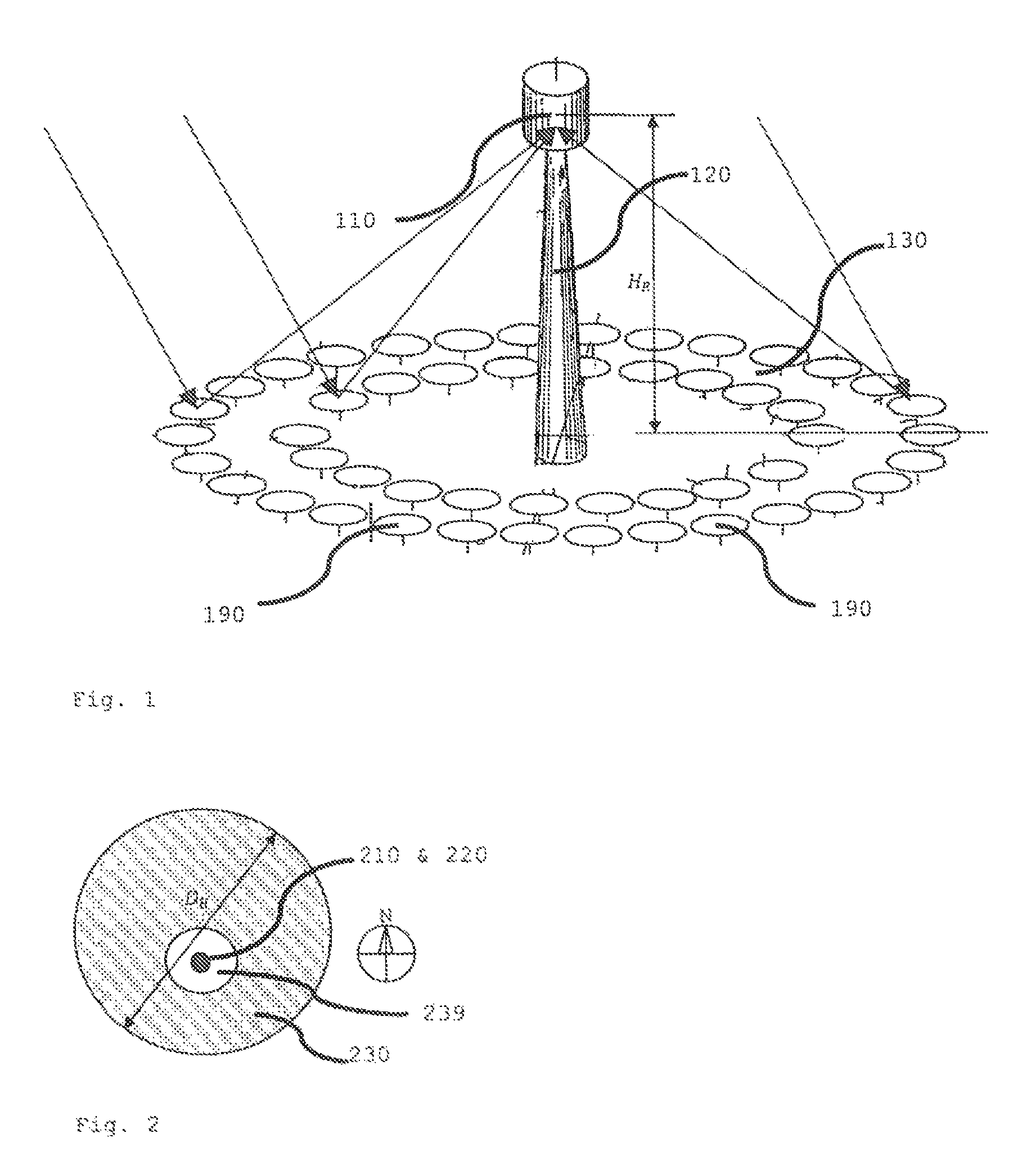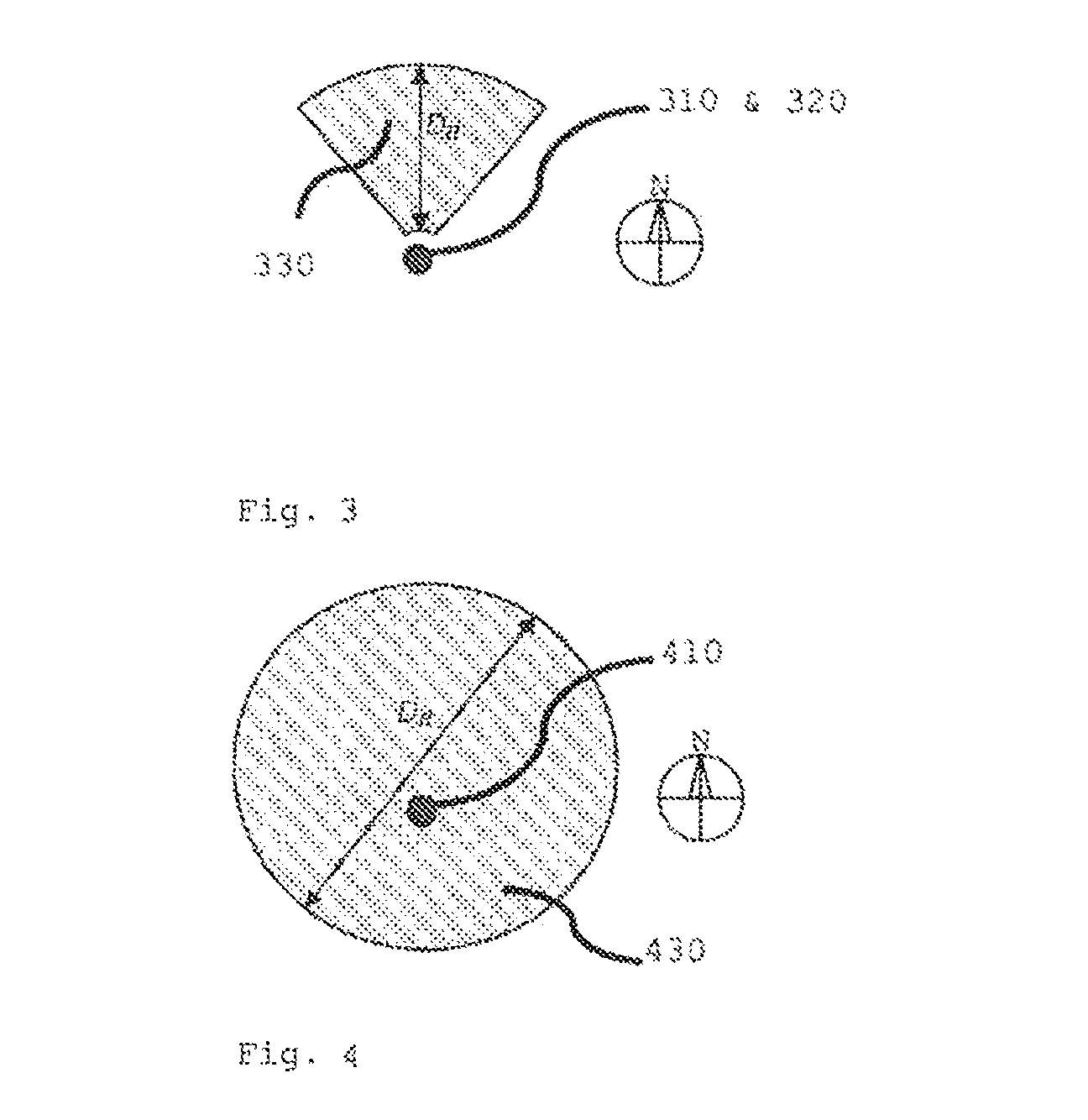Central receiver solar system comprising a heliostat field
a solar system and central receiver technology, applied in the direction of solar heat collectors for particular environments, solar radiation concentration, moving/orienting solar heat collectors, etc., can solve the problems of less efficient heliostats, power increases at the receiver, and decreases in power per heliostat, so as to achieve greater side length ratio, reduce efficiency, and improve efficiency
- Summary
- Abstract
- Description
- Claims
- Application Information
AI Technical Summary
Benefits of technology
Problems solved by technology
Method used
Image
Examples
embodiment 1
Sample Embodiment 1
[0108]A sample layout of a central receiver solar system based on this patent was designed with the following properties:
[0109]Assumptions for Design of the Central Receiver Solar System
Designed time: 21 June, 12 noon, solar time.
Location: latitude 34° N, north latitude, (e.g., North Africa or Southern California, USA).
Assumption: direct normal radiation (solar radiation power) at the designed time: 1000 W / m2.
Radiation power (thermal power in Megawatt—MWth) on the target surface of the receiver at the design time: 140 MWth.
[0110]Receiver
[0111]The receiver used is a hohlraum receiver, as depicted in FIG. 15, where the absorber 1515 is situated in a cavity 1512. The solar radiation enters through the optical opening, or aperture 1511, into the cavity 1512 and impinges there on the absorber 1515, which changes the solar radiation into heat. The absorber 1515 can also have different shapes and structures. The normal vector nR of the aperture surface points downward. B...
embodiment 2
Sample Embodiment 2
[0146]A further sample design for a central receiver solar system based on this patent was designed with the following properties, making use of the invented type of heliostats with rigid quasipolar axle suspension (FQA):
[0147]Assumptions for Design of the Central Receiver Solar System
[0148]Designed time: 21 June, 12 noon, solar time.
[0149]Location: latitude 34° N, north latitude, (e.g., North Africa or Southern California, USA).
[0150]Assumption: direct normal radiation (solar radiation power) at the designed time: 1000 W / m2.
[0151]Receiver
[0152]The receiver used is a receiver with external absorber, as shown in FIG. 20, there is an absorber 2015 at one side of the receiver. The surface of the absorber 2015 is thus also equal to the optical opening of the receiver, or aperture 2011. In other cases, the absorber 2015 can also have a nonflat surface. The normal vector nR of the absorber surface points downward. BR—NS is the width of the rectangular absorber 2015 in t...
embodiment 3
Sample Embodiment 3
[0193]A further sample design for a small central receiver solar system based on this patent making use of heliostats with rigid horizontal axle suspension in a heliostat field consisting solely of a near field and where the support structure is a revolving tower crane with jib, enabling movement of the receiver in up to three dimensions:
[0194]Assumptions for Design of the Central Receiver Solar System
Designed time: 21 June, 12 noon, solar time.
Location: latitude 34° N, north latitude, (e.g., North Africa or Southern California, USA).
Assumption: direct normal radiation (solar radiation power) at the designed time: 1000 W / m2.
Radiation power (thermal power in Megawatt—MWth) on the target surface of the receiver at the design time: 2 MWth.
[0195]Receiver
[0196]The receiver used is a hohlraum receiver, as depicted in FIG. 15. The normal vector nR of the aperture surface points downward. BR—NS is the width of the rectangular aperture 1511 in the north-south direction and...
PUM
 Login to View More
Login to View More Abstract
Description
Claims
Application Information
 Login to View More
Login to View More - R&D
- Intellectual Property
- Life Sciences
- Materials
- Tech Scout
- Unparalleled Data Quality
- Higher Quality Content
- 60% Fewer Hallucinations
Browse by: Latest US Patents, China's latest patents, Technical Efficacy Thesaurus, Application Domain, Technology Topic, Popular Technical Reports.
© 2025 PatSnap. All rights reserved.Legal|Privacy policy|Modern Slavery Act Transparency Statement|Sitemap|About US| Contact US: help@patsnap.com



